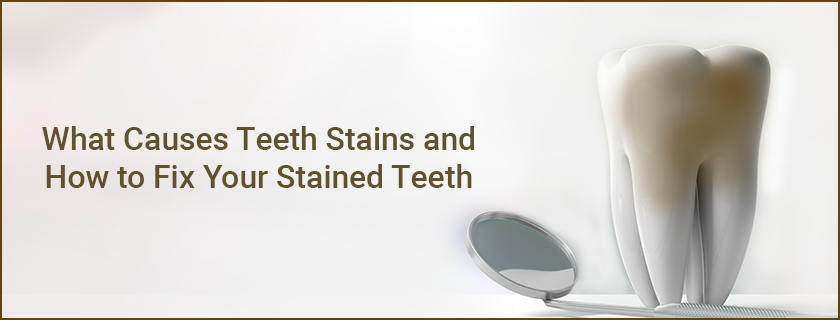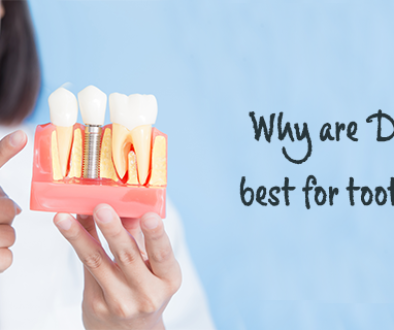Types of Discolorations
Teeth stains and discolorations occur for many reasons, including food consumption choices, oral hygiene, and the use of certain medications. They generally appear on the surface of the tooth or the lower side of the tooth enamel. The dentist has identified three main categories of teeth stains:
Extrinsic Teeth Discoloration: An extrinsic tooth stain is a discoloration on the surface of a tooth. This occurs when the teeth come in contact with pigmented foods or drinks. These pigments then build up around the teeth in the form of stain particles. This strain is generally caused by the use of tobacco or by drinking coffee, tea, wine, or cola. Such stains can be cleared with either regular dental cleaning or brushing with whitening toothpaste.
Intrinsic Teeth Discoloration: Intrinsic teeth stains are natural discolorations below the surface of the tooth. This occurs when stain particles get through the exterior of the tooth and gather within the enamel. Excessive use of fluoride can result in intrinsic stains, especially in small children. As this is a natural tooth stain, it is difficult to remove – but it is not impossible. An intrinsic tooth discoloration would require bleaching by a professional or using teeth-whitening products at home.
Age-Related Teeth Discoloration: Age-related teeth discoloration is a result of both intrinsic and extrinsic tooth staining. The core of your teeth, the dentin, naturally yellows over time. As we grow old, the enamel that covers the teeth becomes thin, allowing the yellowed dentin to show through. This coupled with the consumption of certain foods, beverages, and tobacco throughout one’s life can cause one’s teeth to discolor with age.
What causes stained teeth?
- Tobacco: Use of tobacco in any form, be it smoking cigarettes or chewing tobacco, contributes to stained teeth.
- Poor Oral Care: Poor dental care and oral hygiene (such as a lack of daily brushing or flossing), will lead to discoloration.
- Food & Drink: Coffee, tea, red wine, dark sodas, some fruits, and vegetables are proven causes of discolored teeth.
- Trauma or Disease: Any trauma or disease that affects the enamel development in infants – either during the developmental stage in the womb or while their teeth are growing – can cause discolored teeth. Trauma and diseases that affect adult teeth, such as radiation, can also cause stained teeth.
- Medications and Treatments: Some medical treatments including antihistamines, chemotherapy, and some antipsychotic drugs, can also cause teeth discoloration.




